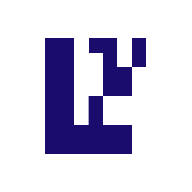As a relatively new layer2 chain, Zircuit is naturally suitable for the integration of AI elements such as AI model inference and AI Agents.
Written by: Haotian
Why is @ZircuitL2 considered a unique layer2? 1) It is built on the OP Stack codebase yet does not belong to the OP Superchain camp? 2) It is an OP-Rollup chain but does not emphasize fraud proofs, bearing a strong ZK imprint in both name and technical details? 3) It is clearly unrelated to the AVS security consensus mechanism yet offers $Eigen stakers airdrops, etc. Next, I will briefly explain my understanding of this chain Zircuit:
1) The OP Stack clearly provides a fast foundational technology framework for starting layer2, but many chains including Metis, Mantle, and Zircuit have utilized the OP Stack codebase technology framework without being incorporated into the Superchain strategic route.
The reason is simple. Although the Superchain enjoys the resource benefits of the OP Super Alliance, it is also limited in technical autonomy and flexibility, such as fraud proofs. Many layer2 chains in the OP Stack camp have not fully launched their Fraud Proof systems, which is greatly related to their choice of framework dependency and neglect of autonomous development.
Zircuit is typical; although marked as OP-Rollup Type on L2beat, its overall technical architecture and brand tone give a strong ZK perception impression, leading many to categorize it as a ZK-Rollup.
The preference for ZK technology frameworks is mainly because the support of ZK technology can make the OP-Rollup framework more reliable. After all, an OP-Rollup without a functioning fraud proof is hard to be considered a secure and reliable chain. However, with a ZK proof system, the trust environment built on ZK technology can effectively compensate for its shortcomings in optimistic challenge proofs. Therefore, strictly speaking, it should belong to the hybrid Rollup.
In fact, this hybrid Rollup architecture design is not new, as other emerging layer2 solutions also utilize it.
@MetisL2
Based on this, it emphasizes differentiation by providing users with a fast withdrawal exit channel through the ZK-Rollup Router, without having to wait for a 7-day challenge period.
2) Recently, Vitalik praised Starknet for its optimization of the Blob Gas pricing mechanism and block state compression. This is actually another optimization direction that layer2 needs to enhance cross-chain interoperability: improving its own data structure and performance details.
Because the upgrade route for the Ethereum mainnet in the future will trend towards ZK-SNARKs lightweight, if layer2 chains can proficiently apply ZK technology at the underlying level, enhancing performance in terms of data structure, state compression, message transmission, etc., they will be closer to the future Rollup-Centric strategic direction.
Therefore, as a newcomer, Zircuit has made a number of technical optimizations in detail since the inception of its chain, such as:
1. Sequencer level security enhancement (SLS): Many layer2 chains face issues such as Sequencer centralization and MEV, hindering the stable development of financial application protocols like DeFi in the layer2 environment.
In view of this, Zircuit has innovatively designed a preventive safety architecture for the Sequencer. Transactions are monitored for malicious activities while in the Mempool, and any malicious transactions are subjected to a layer of isolation that includes multiple release conditions, ensuring that normal transactions are executed smoothly and securely. This method of adding a layer of safety checks in the Sequencer component can identify potential MEV behavior, providing a fairer execution environment for DeFi applications.
2. Modular Proof System: ZK-Rollup paradigm layer2 chains have a clear finality advantage over OP-Rollup chains, but at the same time, they incur additional expenses for computing, generating, and verifying proofs. These costs are not included in the mainnet's reduction of layer2 gas through blob blocks, so ZK-Rollup layer2 needs to find ways to reduce ZK proof expenses.
In response, Zircuit adopts two paths, Template Proofs and Proof Aggregation, to optimize costs: template proofs are a transitional solution that uses simplified proof templates to maintain the update verification of the base state without needing to generate complete proofs for each batch, thereby reducing costs; proof aggregation collects multiple unverified proof tasks and generates proofs in parallel through specific circuits and general circuits, ultimately aggregating these proofs into a single proof for unified verification.
Clearly, setting up specific proprietary circuits to accommodate different proof types in the Proof system can significantly reduce the costs of ZK proof generation and verification. This is similar to Starknet using the STARK system, zkSync using recursive systems, etc., which can effectively reduce ZK overhead.
3. AI-Enabled layer2: As a relatively new layer2 chain, Zircuit is naturally suitable for the integration of AI elements such as AI model inference and AI Agents. This is reflected in the AI model analysis of suspicious transactions, special situations where AI automates isolation or pauses protocols, etc., in the SLS sequencer.
That's all.
As for why Zircuit is teaming up with @Eigenlayer for an airdrop, it is hard to see from a purely technical perspective. I prefer to understand it as Zircuit's strategic support for Eigenlayer's output of Ethereum AVS security.
From a broader perspective, AVS as a fast security consensus infrastructure may help Zircuit's SSL system quickly integrate into other layer2 ecosystems at some point.


